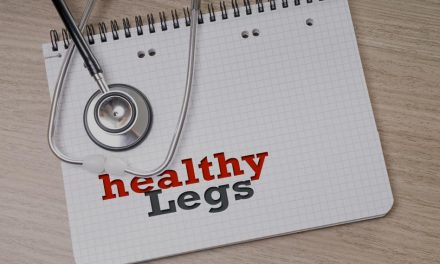
Varicose Vein Stripping Incredibly Sometimes Has Street Cred

Varicose Vein Care and Today’s Ever Changing Environment
Malcolm Gladwell, the famous author, dissected American healthcare. Challenges like Obamacare, malpractice, and insurance regulations were closely examined. In his article, he asked for guidance to help people understand what it is really like to be a physician.
I am grateful that I have found my calling as a doctor who specializes in varicose veins. My specialty gives me the opportunity to care for others in a satisfying and fulfilling way.

Is Stripping Ever Indicted Anymore?
This topic was recently discussed at the International Vein conference in Miami in May 2016. Dr. Mark Meissner, a highly esteemed board certified, and one of the top five vein experts in the world believes that there are circumstances when a modified version of the traditional stripping operation in special circumstances is justified.
Dr. Nick Morrison agrees. He is the past president of the American College of Phlebology and President, International Union of Phlebology (2015-2019) and is a leading authority in this field. He has published dozens of peer reviewed journal articles about venous disease and often speaks at the major venous conferences. He concurs that stripping still has a small but significant role in the modern treatment of some selected varicose veins.
However, there is some disagreement in this regard. Dr. Thomas Proebstle, a renowned and widely respected vein expert and dermatologist from Germany believes that any type of stripping has absolutely no place in the modern approach toward treating venous disease. Perhaps his training as a dermatologist limits his experience and abilities in this regard.
The one specific circumstance that many vascular surgeons find stripping still useful is when the target vein is straight and lies just beneath the surface of the skin. A modified version of stripping called PIN stripping gives superior cosmetic results in this circumstance. PIN stripping (perforate invaginate) is analogous to turning the vein inside out as it is gently removed. It results in better cosmesis in comparison to conventional stripping.
When the saphenous vein is right under the skin, using laser or radiofrequency to ablate or get rid of the saphenous vein often results in unsightly hyperpigmentation of the overlying skin.That is cosmetically unattractive and undesirable. Removing a short segment of this superficial saphenous vein or stripping it with the new minimally invasive PIN stripping technique is actually superior!
There is no pain and no significant scarring. In this one circumstance, the stripping procedure in the year 2016 is preferred by patients and surgeons alike!
Really!
This viewpoint could hold its own in the “Ripley’s Believe It or Not!” museum. Stripping is so repugnant and maligned, however, present-day vein experts truly believe that there still is a place in the modern vein specialist’s armamentarium for this procedure in selected cases.
The Early Days of Being a Vascular Surgeon
Vascular surgeons devote their time to treating both arterial and venous disease. The majority of the time was spent on arterial disease. Until recently, veins were looked at as the bastard stepchild. Even the board examination for vascular surgery had less than ten per cent of their questions about venous disease.
I spent most of my early days treating arterial aneurysms, blocked arteries with bypasses and performing endarterectomies of the carotid artery to prevent strokes. Unlike minimally invasive techniques, “open surgery” involved cutting. This has been largely replaced with catheter delivered stents and grafts.
Vascular surgery training and practice is one of the most demanding specialties in medicine. People with vascular problems are the sickest patients. Characterizing a vascular surgeon as a doctor is like calling an astronaut a pilot.
For the first fifteen years after completing my training at the Mayo Clinic, we continued to make incisions and pulled and ripped out veins or stripped them. It was brutal. We sympathized with our patient’s pain after their stripping operation.
There were no alternatives before the year 2000. Now patients want to know if they can resume full vigorous exercising on the day of their modern minimally invasive vein procedure.
There has been a paradigm shift with the latest minimally invasive procedures for varicose veins. Bruising and pain are considered complications rather than the expected outcome.
Discussion has now shifted to which is the best and least painful venous ablation technique. The bottom line is – all of the modern techniques perform equally well in experienced hands.
Together with the Society for Vascular Surgery, the American Venous Forum has taken a more active stance on chronic venous disease. A journal called the Journal of Vascular Surgery: Venous and Lymphatic Disorders was created to provoke and encourage research that has been seriously lacking in the venous disease arena.
Modern Challenges of Treating Varicose Veins and Venous Disease
With all candor, I must admit that the biggest challenge today in treating veins is not the actual treatment. By far, the economic barriers set by the commercial insurance companies and governments are the most difficult.
In Pittsburgh, there are two major insurance behemoths. They have been at war for years. The result has transformed my practice and almost every other physician’s office in Pittsburgh dramatically.
Economic forces have made it nearly impossible to run an individual solo medical practice. The costs of keeping the lights on have demanded that primary care doctors sell their practice to one of these giants or the other.
Pittsburgh’s two main health insurance companies, UPMC and Highmark, strongly discourage their doctors from referring patients with varicose veins outside of their network (to the enemy).
Shock and Awe
Venous treatments that I know are medically necessary are opposed by insurance companies that won’t pay for them. That can only be viewed as “ shock and awe”. Insurance companies determine medical necessity. Not doctors. That is a disgrace.
Although UPMC and Highmark have slugged it out for years, many of us believed that they would finally come to terms and work together in the end. This did not happen. Even the government of Pennsylvania could not make that happen.
In Pittsburgh, we are left with a confusing and fragmented system of healthcare where one has to often choose one or the other side. Hardworking and altruistic doctors are caught in the middle. Patients with varicose veins are stuck as well.
We accept and participate in both Highmark BC/BS and UPMC health plans because I am independent.
Like other vascular surgeons, I am entrusted through my board certification and training to do my very best to care for my patients. However, insurance companies always determine medical necessity. They decide if the treatment that I recommend will be covered and paid for appropriately.
Not physicians who have trained and devoted their entire lives to learn what is best for their patients.
At a recent medical conference, one of the talks was entitled “Insurance Relations: Good Communication is the Key to Successful Appeals and Predeterminations”. In other words, how doctors should deal with denials from your health insurance company.
Insurance companies follow guidelines that they pick and choose to maximize their profit. They are multibillion-dollar industries. Most commercial insurance companies have obligations to their shareholders.
Some skirt the boundary between being nonprofit or have recently switched to being for profit. The present president of the Pennsylvania Medical Society, Scott Shapiro MD, has described Highmark health insurance’s actions as “reprehensible” in its quest for profit. He stated that their profits are “exorbitant”.
Fear, Disappointment and Personal Satisfaction Treating Varicose Veins
Every doctor lives with the fear that a decision or a procedure will end up bad and harm someone. Wrong diagnoses or technical errors even when performing a venous procedure are always in the back of my mind.
When discussing risks during my initial varicose vein consultation, I am surprised at how many people don’t envision that there could be a problem or complication afterwards. I always ask patients to weigh their risks before we do anything.
Like many vascular surgeons I have had many sleepless nights agonizing about what I could have done differently. Fortunately, at this stage of my vascular career, through my training, continuing medical education and experience, those nights are fewer and farther between.
I feel fulfilled practicing safe and effective varicose vein procedures that have almost instantaneous fantastic results. The risks are very small. The rewards for my patients and for me are great.
As the only vein specialist running an accredited varicose vein treatment center in the city, I proudly look back on the accomplishments that made this possible.
Great vein care begins and ends with the vein doctor. The doctor makes or breaks the success of your vein treatment.
Sometimes that success requires on more direct patient advocacy to get approval for necessary vein procedures. It’s a brave, new world.
You may have to personally intervene with your insurance provider (call your insurance company on the phone) after your doctor has exhausted all the usual avenues for approval. Insurance companies are more prone to listen to the person paying their salaries.
Conclusion
The constraints of running a successful varicose vein practice are demanding.
My vascular surgery experience and my independence by not being an employee of one of these two insurance giants can be both a blessing and a curse.
Somehow, I am able to manage my varicose vein patients in a way that benefits them and satisfies their insurers. That challenge is growing literally every day. It wears us all down. Personal job satisfaction is eroding.
On the other hand, I am optimistic that I can continue to do the best thing for my vein patients no matter what it takes. These are tough challenges. Most vascular surgeons are very tough. That toughness is what it takes to become a physician and then specialize in vascular disease.
As a busy vein specialist, specializing in varicose veins, I eagerly look forward to every new patient with the same enthusiasm that I had as an intern.
I enjoy the confidence and the ability that is a result of a lifetime of treating veins and venous disease.
One of the most important factors that you should consider in choosing a vein clinic is the center’s reputation. It does matter a lot to me whether people have a high opinion of my integrity, good faith and trustworthiness.
It also means a lot to me when I personally spend a considerable amount of time with a patient who does not require any intervention and the last thing they say to me is, “thanks for your honesty”.
Research our accredited vein center on the articles on this web site to learn more. Do your homework when choosing a vein treatment center and vein specialist.
Call us at 724-987-3220 today or click here to find out how our vein center is truly different. We are the only varicose vein treatment center in the city of Pittsburgh that has passed an on-site inspection.
We accept and participate in both Highmark BC/BS and UPMC health plans because I am independent.
We also accept and participate in the following health insurance plans.
- Aetna
- Advantra
- Anthem/BCBS
- Cigna
- Coventry
- Devon
- 4Most
- Health America
- Health Assurance
- Health Plan of Upper Ohio Valley
- Humana
- Highmark/BCBS
- Medical Mutual
- Mon-Valley Health Plan
- Multi-Plan
- Tricare
- United Health Care
- Western Pennsylvania Electric (WPEE)
- UPMC
- All BC/BS plans









